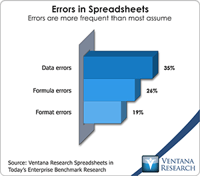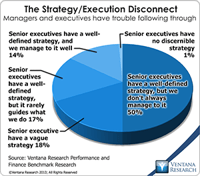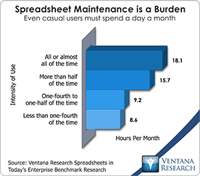Many finance executives want to improve their department’s effectiveness in order to play a more strategic role in their company. However, frequently they find at least three serious challenges to achieving this sort of finance transformation. One is that too much time and resources are devoted to purely mechanical tasks. Another is that the information executives need is not always available immediately. A third is that they lack the data (which is unavailable or too difficult to access), the...
Read More
Topics:
Predictive Analytics,
Office of Finance,
Controller,
credit,
debt,
Kyriba Financial Performance Management,
Analytics,
Business Performance Management (BPM),
CFO,
Financial Performance Management (FPM),
cash management
Because of its impact on the Office of Finance, I’ve written in the past about the proposed timeline and IT implications of the convergence of U.S. Generally Accepted Accounting Principles (U.S. GAAP) and the International Financial Reporting Standards (IFRS). While the bottom-line differences between U.S. GAAP and IFRS are likely to be minimal for most businesses, some aspects of the convergence promise to be significant and problematic. One important change is how companies account for...
Read More
Topics:
GRC,
Office of Finance,
control,
error,
IFRS,
Governance, Risk & Compliance (GRC),
Business Performance Management (BPM),
CFO,
Financial Performance Management (FPM),
Financial Performance Management,
GAAP
This is the beginning of the season when companies that are on a calendar year begin their strategic and long-term planning. Ventana Research performed an extensive investigation in this area with our long-range planning benchmark research. Strategic and long-range planning is a process and discipline that companies use to determine the best strategy for succeeding in the markets they serve and then ensure they have the capabilities and resources needed to support their strategic objectives.
Read More
Topics:
Big Data,
Master Data Management,
Performance Management,
Planning,
Human Capital Management,
Office of Finance,
Operational Performance Management (OPM),
Reporting,
Budgeting,
dashboard,
Analytics,
Business Performance Management (BPM),
CFO,
Customer Performance Management (CPM),
Data,
Financial Performance Management (FPM),
Sales Performance Management (SPM),
Supply Chain Performance Management (SCPM),
Workforce Performance Management (WPM),
CEO,
Financial Performance Management,
FPM
The spreadsheet is one of the five most important advances in business management over the last 50 years. It has changed all aspects of running an organization. It was the original “killer app” that made people go out and buy personal computers. So you see I’m enthusiastic about spreadsheets, but I realize they have limits that must be respected to work efficiently. One of the more important findings from our benchmark research Spreadsheets for Today’s Enterprise was about the time spent in...
Read More
Topics:
Office of Finance,
Operational Performance Management (OPM),
Reporting,
enterprise spreadsheet,
Analytics,
Business Analytics,
Visualization,
Business Performance Management (BPM),
Customer Performance Management (CPM),
Financial Performance Management (FPM),
Information Applications (IA),
Information Management (IM),
Risk,
Sales Performance Management (SPM),
Supply Chain Performance Management (SCPM),
Workforce Performance Management (WPM),
benchmark,
Financial Performance Management
Pricing and profit margins appear to be trending topics, which is normal at this stage of the business cycle. North American companies achieved high levels of profitability coming out of the last recession by staying lean, but this trend has run its course. Margins are being squeezed, and companies are looking for ways to add to the bottom line.
Read More
Topics:
Planning,
Sales,
Office of Finance,
Operational Performance Management (OPM),
Analytics,
Business Performance Management (BPM),
Financial Performance Management (FPM),
Sales Performance Management (SPM),
costing,
FPM,
Price Optimization,
Profitability,
S&OP














